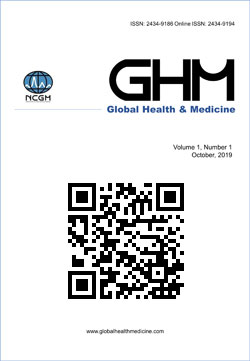Volume 5, Issue 3
Displaying 1-11 of 11 articles from this issue
- |<
- <
- 1
- >
- >|
Editorial
-
Article type: editorial
2023 Volume 5 Issue 3 Pages 125-127
Published: June 30, 2023
Released on J-STAGE: July 11, 2023
Advance online publication: June 27, 2023Download PDF (166K)
Original Article
-
Article type: research-article
2023 Volume 5 Issue 3 Pages 128-135
Published: June 30, 2023
Released on J-STAGE: July 11, 2023
Advance online publication: June 20, 2023Download PDF (649K) -
Article type: research-article
2023 Volume 5 Issue 3 Pages 136-141
Published: June 30, 2023
Released on J-STAGE: July 11, 2023
Advance online publication: June 20, 2023Download PDF (300K) -
Article type: research-article
2023 Volume 5 Issue 3 Pages 142-150
Published: June 30, 2023
Released on J-STAGE: July 11, 2023
Advance online publication: June 25, 2023Download PDF (358K) -
Article type: research-article
2023 Volume 5 Issue 3 Pages 151-157
Published: June 30, 2023
Released on J-STAGE: July 11, 2023
Advance online publication: June 16, 2023Download PDF (323K) -
Article type: research-article
2023 Volume 5 Issue 3 Pages 158-168
Published: June 30, 2023
Released on J-STAGE: July 11, 2023
Advance online publication: June 25, 2023Download PDF (742K) -
Article type: research-article
2023 Volume 5 Issue 3 Pages 169-177
Published: June 30, 2023
Released on J-STAGE: July 11, 2023
Advance online publication: June 27, 2023Download PDF (300K)
Brief Report
-
Article type: brief-report
2023 Volume 5 Issue 3 Pages 178-183
Published: June 30, 2023
Released on J-STAGE: July 11, 2023
Advance online publication: June 20, 2023Download PDF (416K)
Correspondence
-
2023 Volume 5 Issue 3 Pages 184-187
Published: June 30, 2023
Released on J-STAGE: July 11, 2023
Advance online publication: June 25, 2023Download PDF (418K)
Letter
-
Article type: letter
2023 Volume 5 Issue 3 Pages 188-190
Published: June 30, 2023
Released on J-STAGE: July 11, 2023
Advance online publication: June 25, 2023Download PDF (279K) -
Article type: letter
2023 Volume 5 Issue 3 Pages 191-193
Published: June 30, 2023
Released on J-STAGE: July 11, 2023
Advance online publication: June 20, 2023Download PDF (188K)
- |<
- <
- 1
- >
- >|
